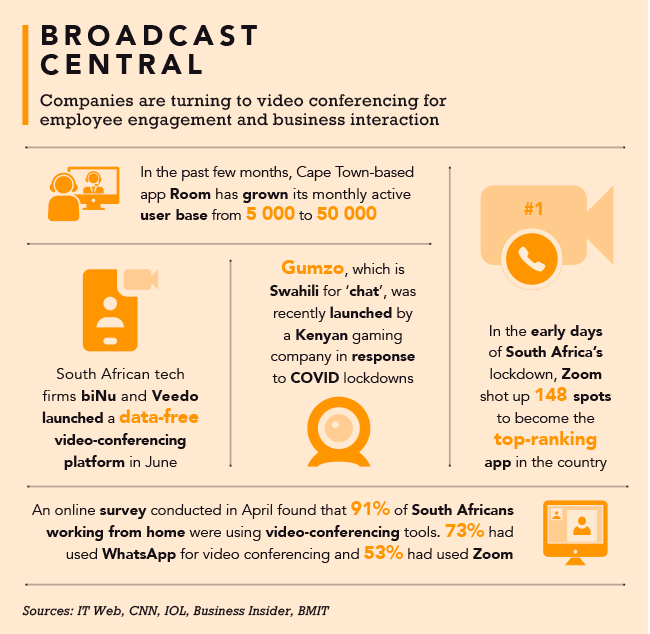In the new, coronavirus era of ‘business unusual’, just 10% of people get dressed up to work from home (WFH) at the start of the day, though they change into more comfortable clothes later, according to a poll by the NPD Group. Many others simply have their ‘Zoom shirts’ conveniently on standby for those online meetings. Traditional business attire is losing its appeal, and usefulness.
The arrival of COVID-19 has sparked an urgent need for companies to rethink the traditional ways of doing business, and thousands of enterprises have adapted to the concept of WFH as lockdowns have been imposed. So far, it has proven a viable way of continuing to operate in a safe environment that doesn’t expose employees to the coronavirus unnecessarily .
COVID aside though, the concept holds other advantages for employers, too. ‘For one, it allows companies to reduce overall infrastructure costs – saving on building and maintenance outlay, parking and other factors associated with the physical presence of workers in a building,’ says Advaita Naidoo, COO of executive search firm Jack Hammer.
‘But also of importance is the impact on employee wellness as a result of a better work-life balance. It allows for enhanced productivity, given that employees are not limited to basic office hours in order to get the work done nor losing hours commuting every day.’
In mid-March, the University of Cape Town’s Graduate School of Business published an online piece noting that, between 2005 and 2019, the number of people around the globe working remotely had grown by 173%. Even in a pre-COVID environment, working from home was no longer reserved for specific industries, and had become the number-one workplace benefit people looked for in a job. That said, the writers add that ‘South Africa is lagging about four or five years behind the curve’. Nonetheless, an increasing number of companies had been implementing WFH policies as a means of enhancing employee engagement, wellness and productivity, as Jack Hammer notes in a survey report released early this year.
South Africa’s lockdown has since given most companies no option but to adopt the WFH concept, but how many of them were ready for it? And how many will continue to operate remotely once the crisis is over – by choice?
A survey conducted by World Wide Worx in partnership with Cisco found that just 24% of South African companies had policies in place for WFH. ‘That means a quarter of South African enterprises had a clear strategy for remote working,’ says Arthur Goldstuck, World Wide Worx founder and CEO.
‘A high proportion told us that the employees were relatively prepared for working from home. However, only around 4% were very prepared.’ What’s more, 38% indicated that employees would be likely to continue working from home (post-pandemic), and 37% of companies had rolled out a digital transformation strategy. ‘That suggests a strong correlation between digital transformation and wanting, or allowing, staff to work from home – regardless of the situation,’ says Goldstuck.
Companies embracing WFH are increasingly looking to a range of digital solutions to conduct meetings and stay in touch with their employees via services such as Zoom, Google Meet, Facebook Messenger, Microsoft Teams and Cisco’s Webex, among others.
In early March, Teams was already one of Microsoft’s fastest-growing business products, with 44 million users. However, the launch of a consumer-focused edition saw those figures leap 70% by end-April, with 75 million daily active users. Meanwhile, Webex supported half a billion meeting participants who generated 25 billion meeting minutes – more than triple the previous average volume – in April.
Some companies have also taken measures to offer improved solutions. Zoom, for instance, recently signed a deal with Oracle Cloud to host their cloud infrastructure to accommodate an influx of users.
‘The increase in remote working has been a massive boon to companies involved in cloud computing and those supplying both hardware and software related to remote working, cloud computing and collaboration,’ says Goldstuck.
‘From a collaboration point of view, the big beneficiaries are the global multinational providers like Microsoft via Teams and Cisco with its Webex system, along with tool providers like Slack, and then, of course, the video-conferencing services, like Zoom, Microsoft Teams, Google Meet and the like.
‘All of those have a presence in South Africa, and Microsoft in particular has a very strong presence, so they have really reaped the benefits of this situation.
‘From a cloud-computing point of view, Microsoft and Amazon Web Services have fully fledged data centres in South Africa, and have been able to benefit enormously and also provide a wide range of services to South African businesses,’ he says.
These developments all contribute to the growing video-conferencing industry, both internationally and locally. According to 6Wresearch, the South African video-conferencing market is projected to grow at a CAGR of 5.3% over the next six years, boosted by the fact that lockdown is pushing the need for communication.
‘This has resulted in a huge increase in the need for data, both for general communication, and for continuing vital activities like WFH, or studying from home,’ says Goldstuck.

‘As a result, we’ve seen African mobile-network operators, for example, not seeing a decline in business. They’re in fact among those that have thrived.’
He adds that remote working has enhanced the way South African businesses can operate as it has forced them to embrace digital transformation. ‘The significance of that is that, for many years already, the message has been quite strong around the need for digital transformation and how it will make businesses more efficient, nimble, agile and innovative. Now they’re forced to embrace it. Initially, the cost and the learning curve will be steep, but the benefits will be long term.’
WFH, says Goldstuck, has also highlighted ‘a massive digital divide that we’ve all known has existed but hasn’t really been addressed actively and not taken seriously enough. It’s now becoming very obvious.
‘Those on the wrong side of the digital divide don’t have access to the internet. They don’t have affordable data access, and that means they haven’t been able to take advantage of remote working or remote learning’.
However, WFH has also shown how crucial communication is in terms of company culture. ‘With the entire team being off-site, you run the risk of people withdrawing into a bubble and feeling despondent and craving team contacts,’ says Jack Hammer’s Naidoo.
‘This is where a company’s prevailing culture becomes apparent and vitally important. Teams that have maintained cohesion are those that have connection rituals, bantering over WhatsApp chats, allowing each other a peek behind the Zoom veil to share their workspaces and, in some cases, even sharing virtual drinks and lunches.’
Pandemic aside, however, employers are changing their view of WFH. ‘COVID-19 has helped so many companies cross this bridge. We expect it to be a trend that continues,’ says Naidoo, adding that it needn’t be an all-or-nothing approach. ‘People may need the flexibility to work remotely for many reasons, but humans also crave contact with others.’
While that Zoom shirt may become a permanent home-office fixture, in-person meetings and handshakes aren’t about to become obsolete.


